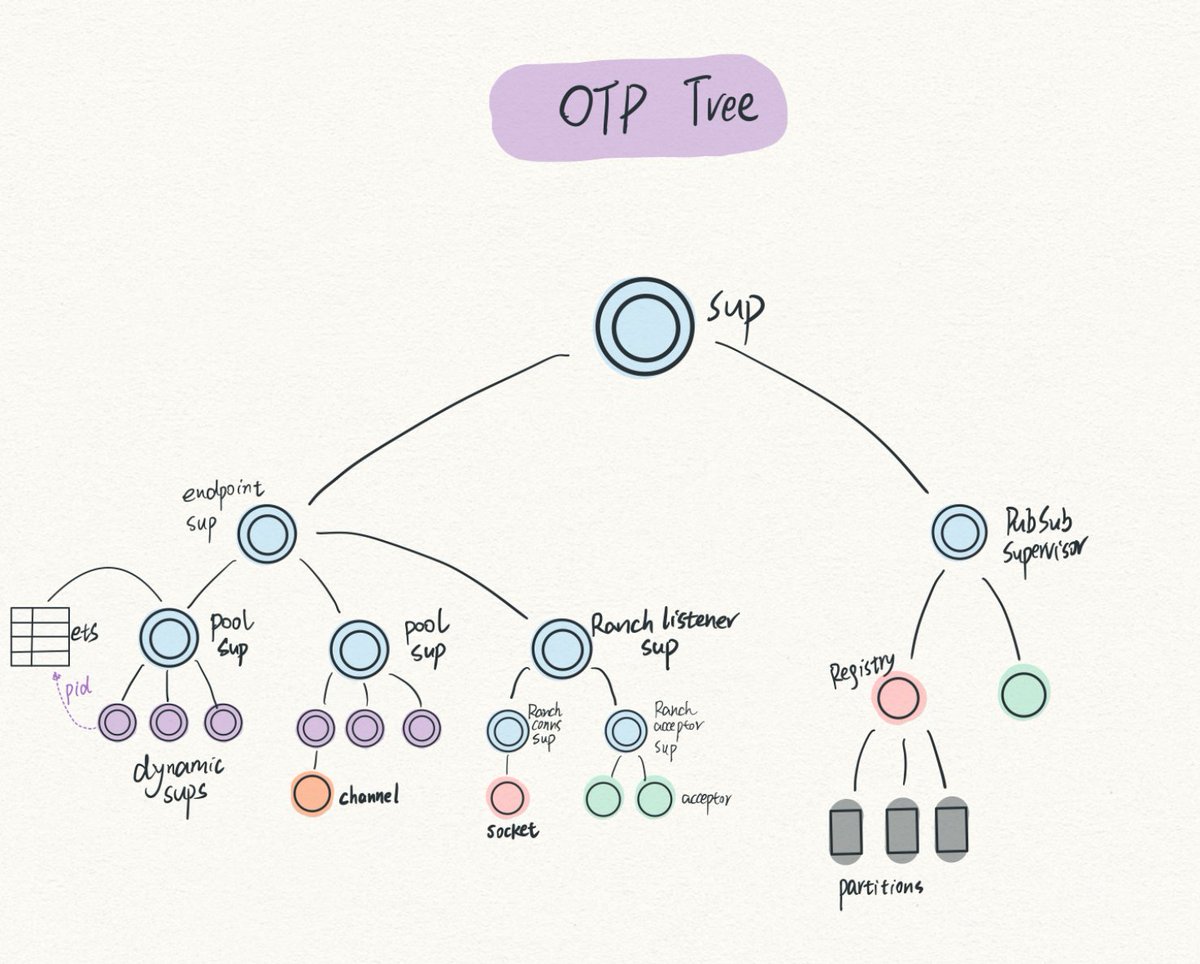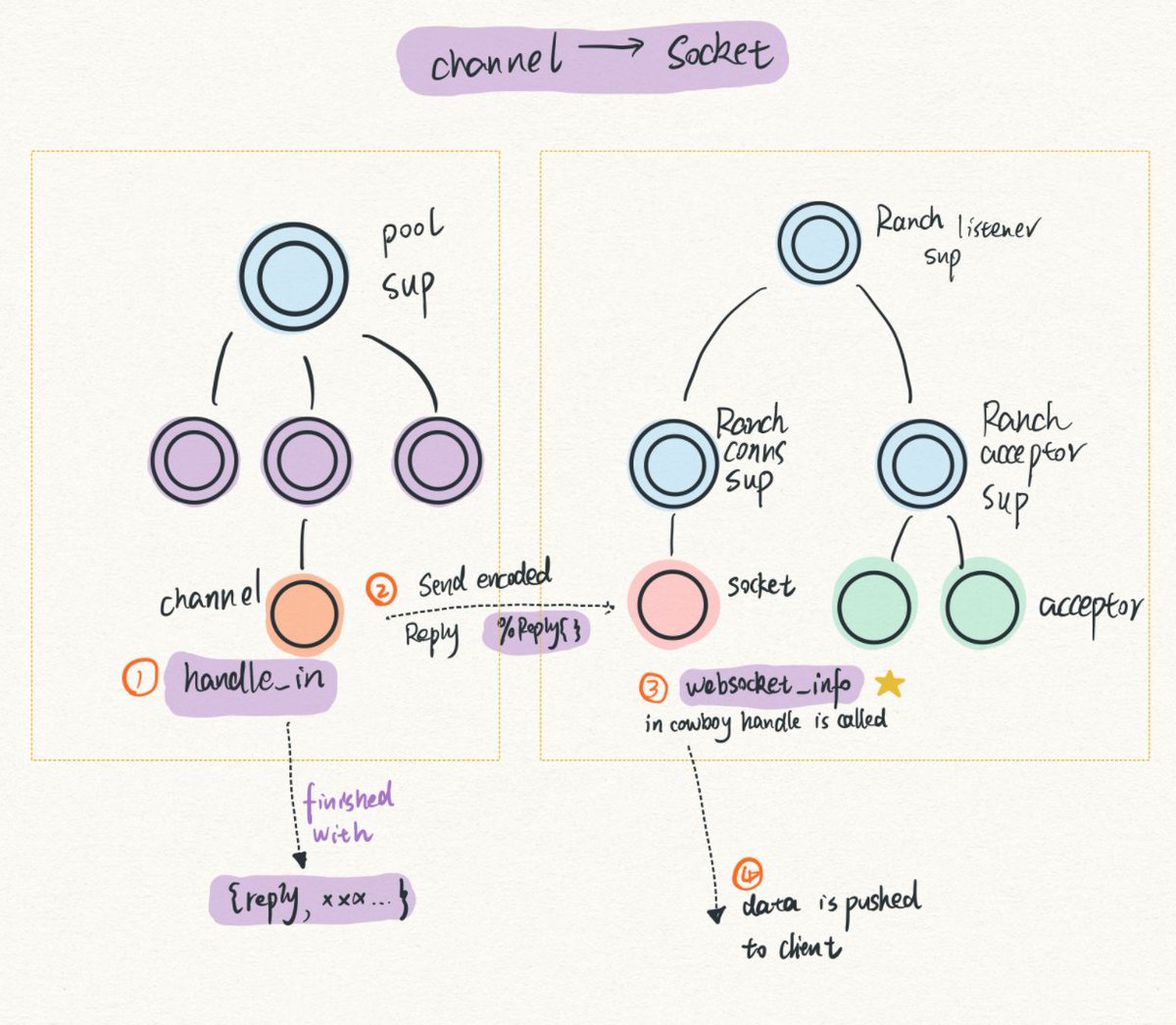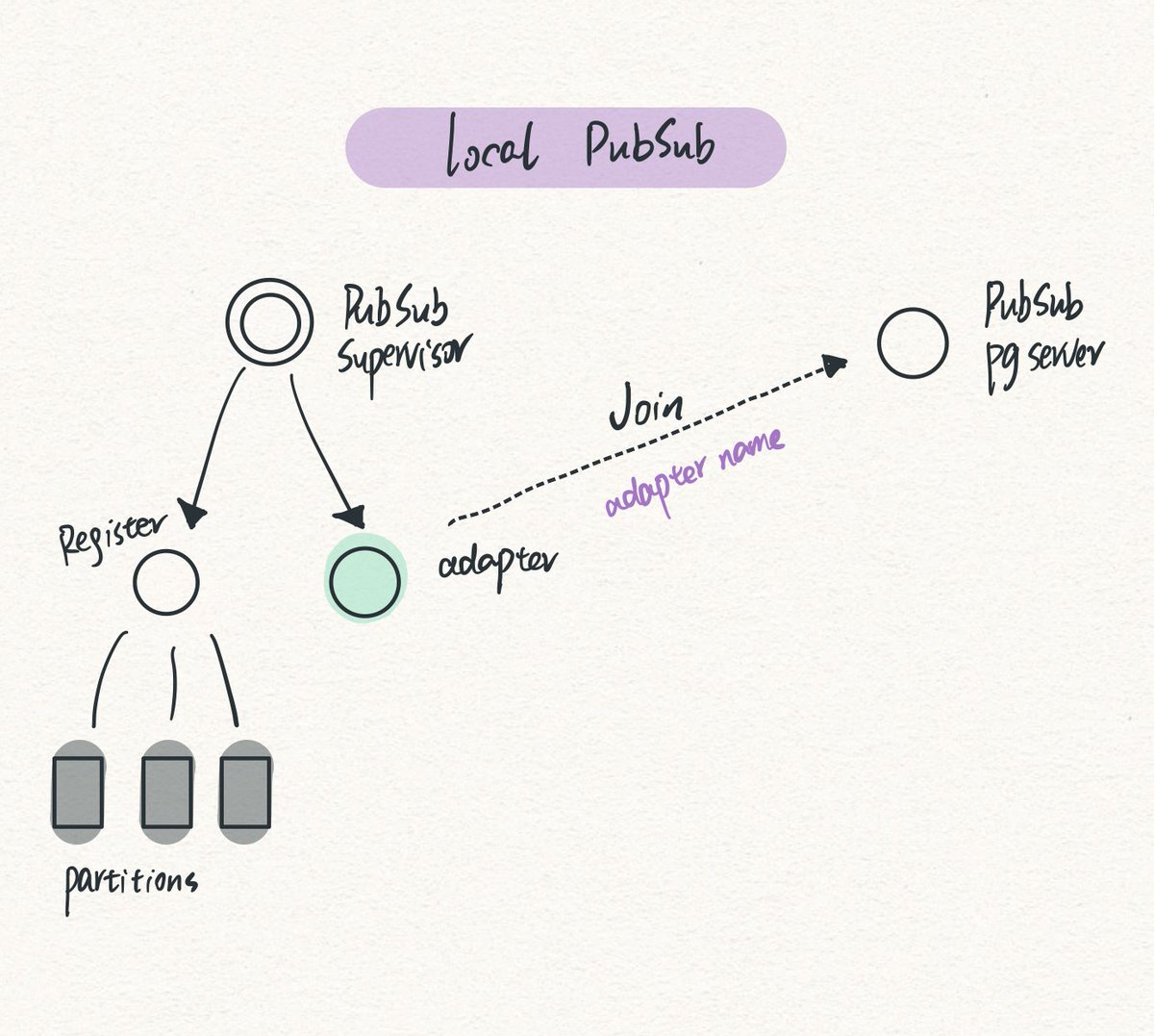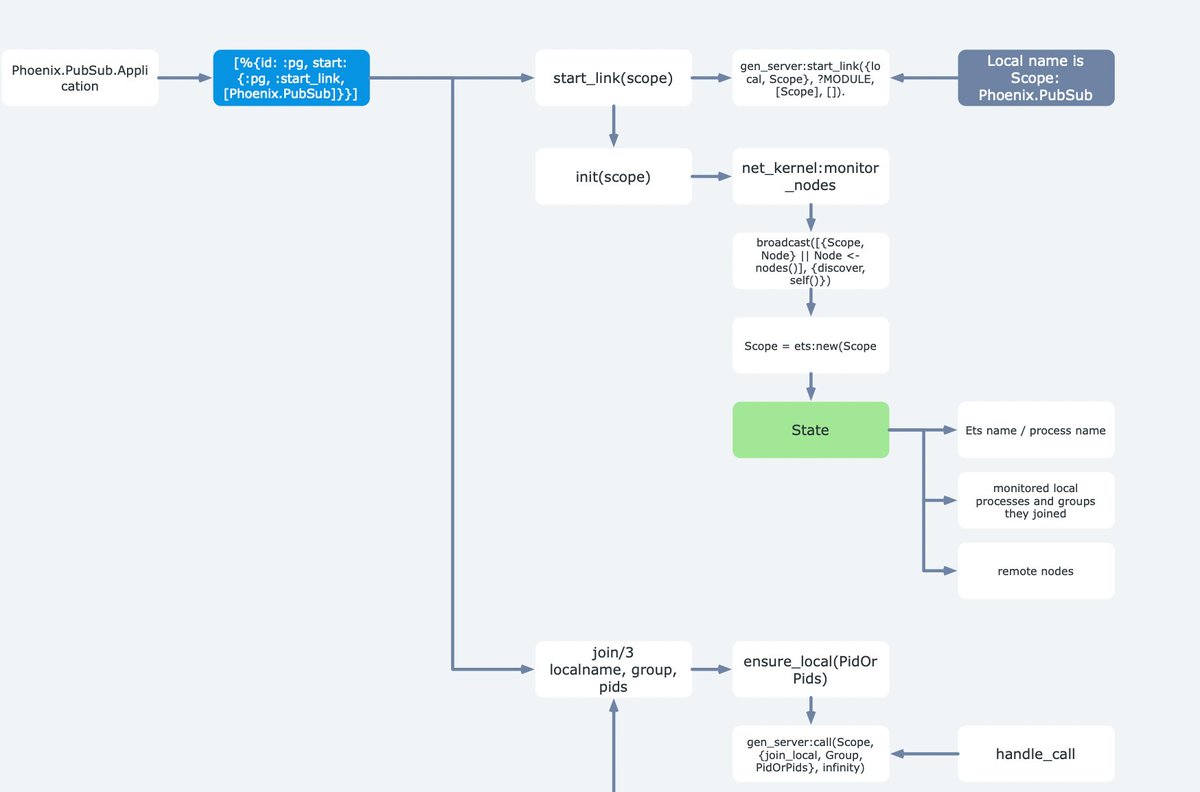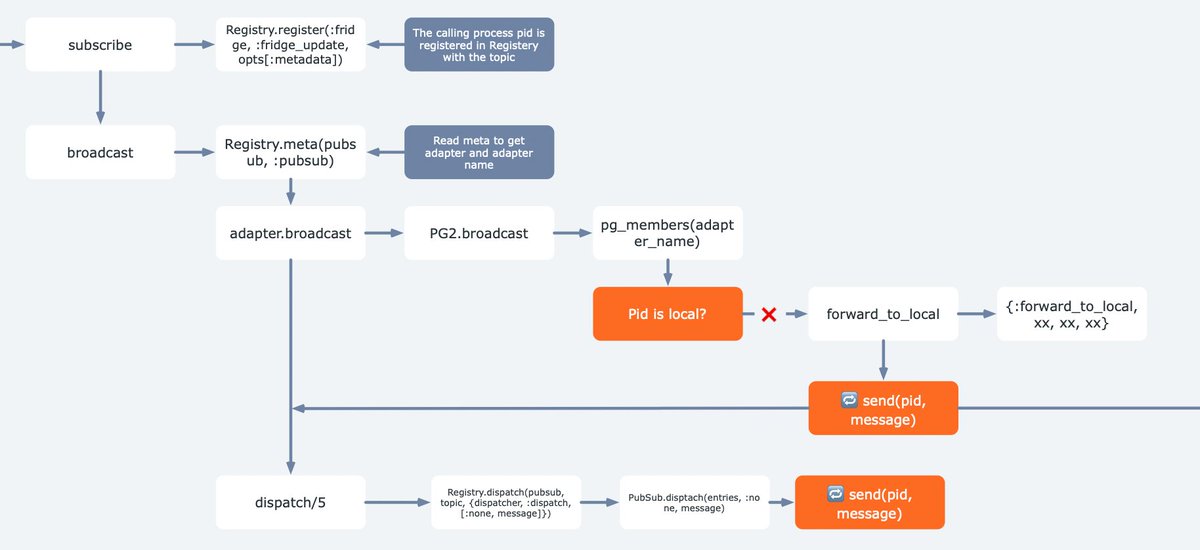1. The endpoint will start several children, we only focus on server and socket here:
* socket children
pool supervisor + a bunch of dynamic supervisors which will eventually start channel servers
the number of dynamic supervisors is the number of CPU cores of your server
* socket children
pool supervisor + a bunch of dynamic supervisors which will eventually start channel servers
the number of dynamic supervisors is the number of CPU cores of your server

* server children
The ranch listener supervisor will start a connection supervisor and an acceptor supervisor.
The acceptors will handle connection creation requests.
A cowboy server process is created after a connection is accepted.

The ranch listener supervisor will start a connection supervisor and an acceptor supervisor.
The acceptors will handle connection creation requests.
A cowboy server process is created after a connection is accepted.

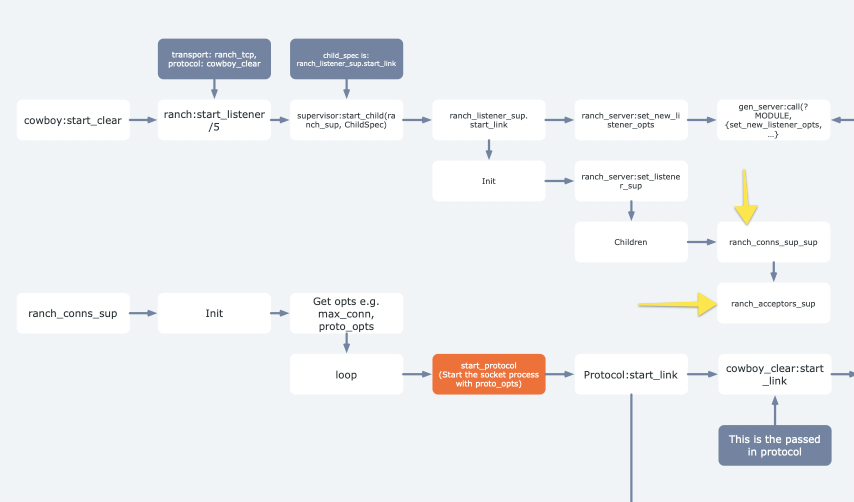
2. Socket creation
After getting an HTTP request with a socket upgrade, the cowboy server process will start to initiate middlewares.
The Phoenix cowboy handler is one of the middlewares.
WebSocket protocol flow:

After getting an HTTP request with a socket upgrade, the cowboy server process will start to initiate middlewares.
The Phoenix cowboy handler is one of the middlewares.
WebSocket protocol flow:
https://twitter.com/algolearner/status/1423646131423047686

3. After initialization, protocol switch happens, WebSocket protocol will takeover.
It can start to handle TCP messages from clients and Erlang messages from the Phoenix channel servers.
It can start to handle TCP messages from clients and Erlang messages from the Phoenix channel servers.
* The websocket_handle callback will be called when clients send messages to the socket.
If there's no related Phoenix channel server, a server process will be started under the dynamic supervisor.

If there's no related Phoenix channel server, a server process will be started under the dynamic supervisor.
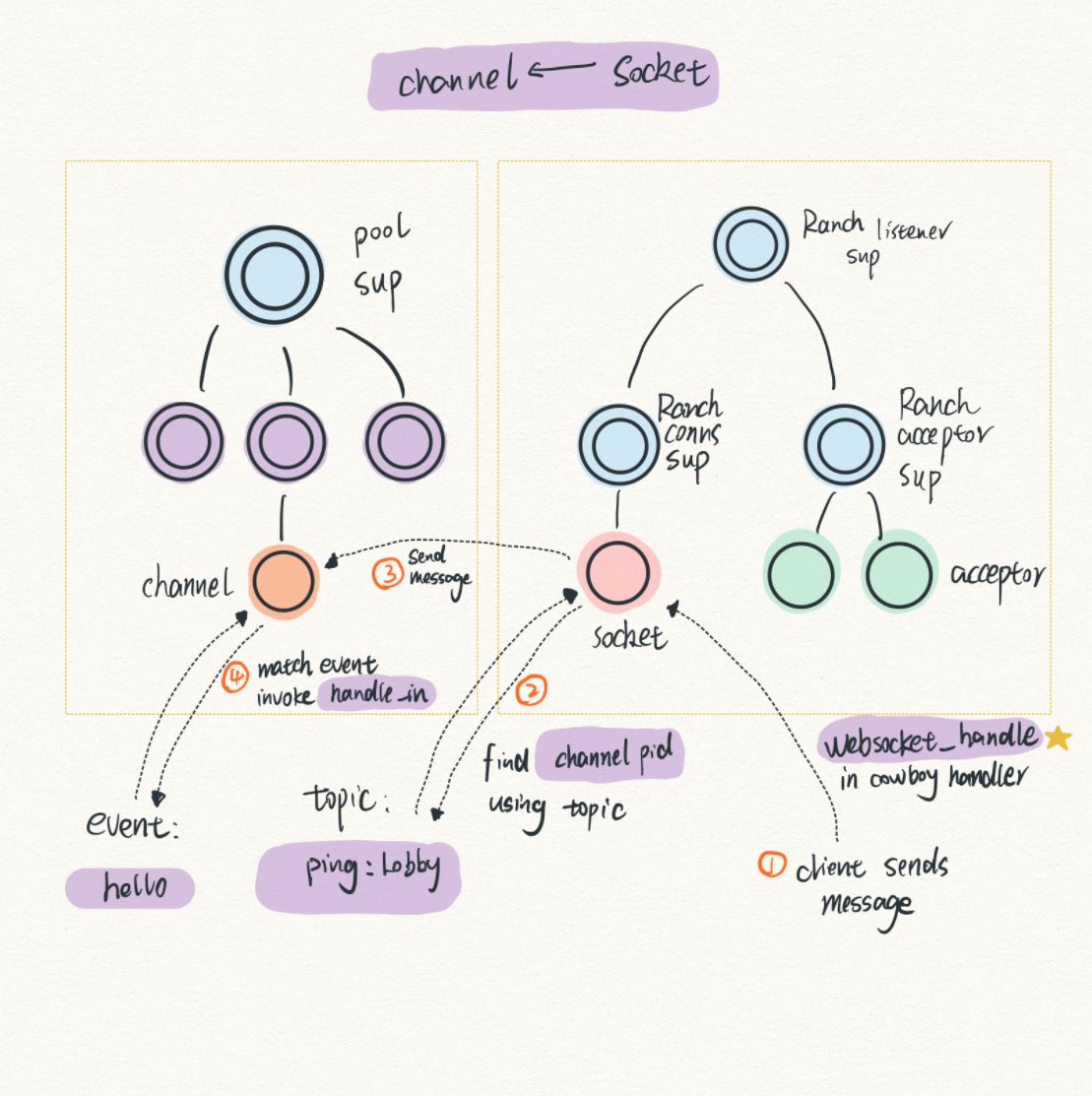

4. Broadcast
when a channel server is spawned, the PID is registered under the full topic name in the registry.
If you broadcast a message to a topic, all the pids are retrieved from the registry, and messages will be sent out to either the channel process or socket process.

when a channel server is spawned, the PID is registered under the full topic name in the registry.
If you broadcast a message to a topic, all the pids are retrieved from the registry, and messages will be sent out to either the channel process or socket process.
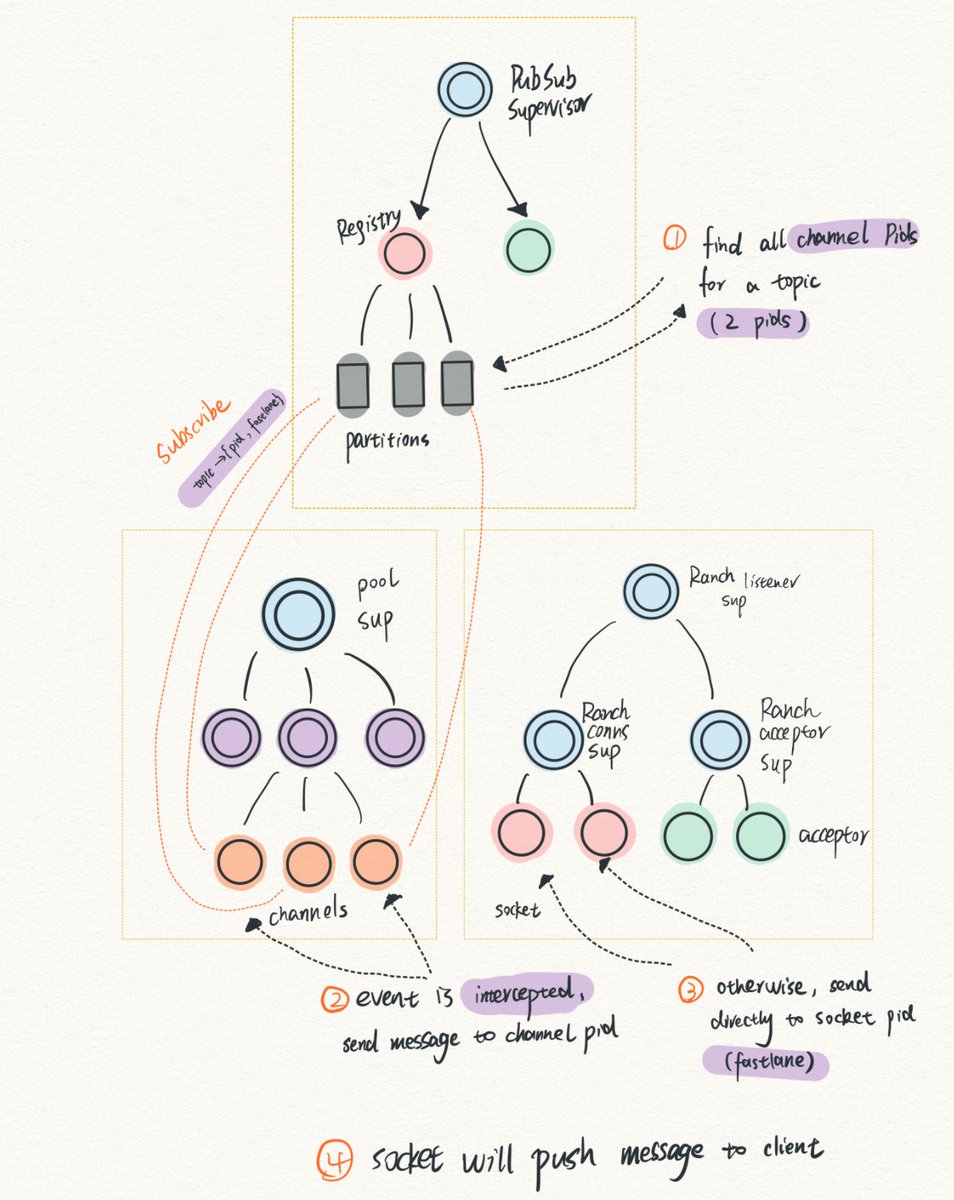
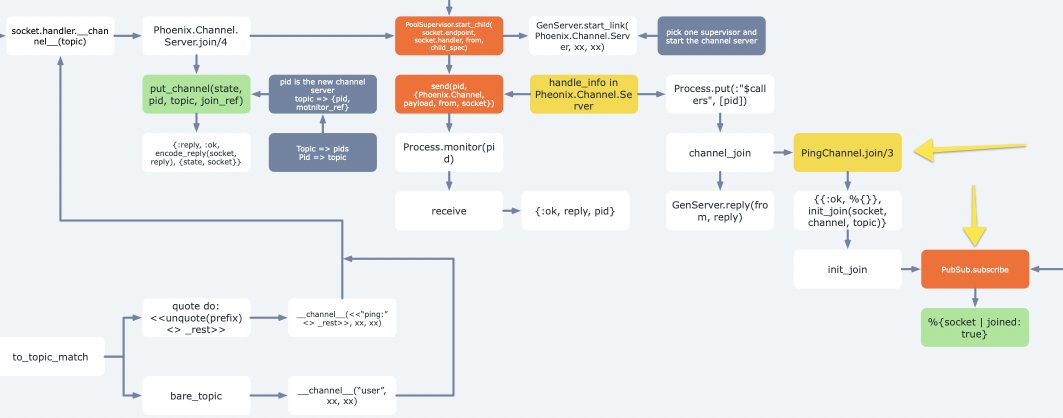
5. Your turn
Now it's time to read more codes and do some experiments. Happy building!
Now it's time to read more codes and do some experiments. Happy building!
A retweet to the first tweet would be greatly appreciated. 💌
• • •
Missing some Tweet in this thread? You can try to
force a refresh

